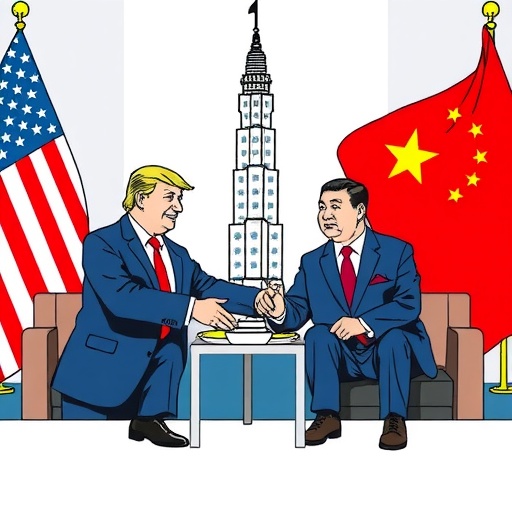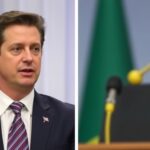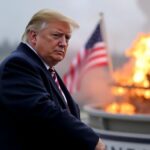US-China Trade Talks Intensify in Kuala Lumpur to Prevent Escalation Before Trump-Xi Summit
In a high-stakes diplomatic push, US and Chinese officials are converging in Kuala Lumpur, Malaysia, for urgent talks aimed at cooling the simmering trade war between the world’s two largest economies. With President Donald Trump and President Xi Jinping set to meet face-to-face at an upcoming summit, these preliminary negotiations could determine whether escalating tariffs plunge global markets into deeper chaos or pave the way for a fragile truce in US-China relations.
- Kuala Lumpur Negotiations: Laying the Groundwork for Trump-Xi Dialogue
- Tariffs in the Crosshairs: Assessing the Economic Fallout of the Trade War
- Technology Controls and Rare Earths: Navigating Strategic Battlegrounds
- Trump and Xi Jinping: The Personal Equation in High-Stakes Diplomacy
- Toward the Trump-Xi Summit: Pathways to De-Escalation and Global Stability
The meetings, which began this week under the auspices of neutral ground provided by ASEAN hosts, come at a pivotal moment. Just last month, the US imposed fresh tariffs on $300 billion worth of Chinese goods, prompting Beijing to retaliate with duties on American agricultural exports. Economists warn that without intervention, these measures could shave 0.5% off global GDP this year alone, according to a recent report from the International Monetary Fund (IMF). As delegates huddle in conference rooms overlooking the bustling streets of the Malaysian capital, the world watches to see if cooler heads can prevail over protectionist fervor.
Insiders reveal that the agenda is packed with thorny issues, from intellectual property theft allegations to supply chain vulnerabilities exposed by the COVID-19 pandemic. “This isn’t just about numbers on a balance sheet; it’s about reshaping the future of international trade,” said Dr. Elena Vasquez, a senior fellow at the Brookings Institution, who has been tracking US-China relations for over a decade. The stakes couldn’t be higher as both sides seek to avoid a full-blown escalation that could ripple through industries from semiconductors to soybeans.
Kuala Lumpur Negotiations: Laying the Groundwork for Trump-Xi Dialogue
The choice of Kuala Lumpur as the venue for these preparatory talks underscores the delicate balancing act in US-China relations. Malaysia, as a key player in Southeast Asia’s economic landscape, offers a neutral platform far removed from the geopolitical tensions of Washington and Beijing. Over 50 officials from both nations, including top trade envoys like US Trade Representative Robert Lighthizer and China’s Vice Premier Liu He, are expected to participate in closed-door sessions that could stretch into the weekend.
According to sources familiar with the discussions, the Kuala Lumpur meetings are designed to iron out preliminary agreements before the marquee Trump–Xi Jinping summit, tentatively slated for November in Singapore. “We’re focusing on building trust and identifying low-hanging fruit,” one US delegate told reporters on condition of anonymity. Early sessions have reportedly centered on de-escalating the most immediate flashpoints, such as the 25% tariffs on Chinese electronics and machinery that have disrupted supply chains for companies like Apple and Tesla.
Historical context adds weight to these efforts. The ongoing trade war, which erupted in 2018, has already cost US consumers an estimated $51 billion in higher prices, per a study by the National Bureau of Economic Research. China, meanwhile, has seen its exports to the US drop by 12% year-over-year. By hosting these talks, Kuala Lumpur is positioning itself as a diplomatic hub, much like it did during the 2019 US-North Korea summit preparations.
Participants are tight-lipped, but leaked agendas suggest a structured approach: morning plenaries on tariff reductions, afternoon working groups on technology transfers, and evening bilaterals on rare earth minerals. “The atmosphere is tense but professional,” noted a Malaysian foreign ministry spokesperson. If successful, these groundwork efforts could lead to a joint statement by week’s end, signaling progress ahead of the leaders’ meeting.
Tariffs in the Crosshairs: Assessing the Economic Fallout of the Trade War
At the heart of the Kuala Lumpur discussions are the punitive tariffs that have defined the trade war since Trump‘s first term. The US has slapped duties on over $550 billion in Chinese imports, covering everything from steel to consumer gadgets, while China has countered with tariffs on $185 billion of American products, hitting farmers hardest. These measures, intended to address trade imbalances and protect domestic industries, have instead fueled inflation and uncertainty.
Take the steel sector, for instance. US tariffs on Chinese steel imports, initially set at 25%, have led to a 30% rise in domestic prices, benefiting some manufacturers but squeezing automakers and construction firms. “We’ve seen job gains in steel towns like those in Pennsylvania, but at what cost?” questioned Sarah Jenkins, CEO of the American Manufacturing Association. A Peterson Institute for International Economics analysis estimates that the trade war has eliminated 245,000 US jobs while slowing China’s GDP growth to 5.8% in the first half of 2023—its weakest in decades.
In China, the impact is equally stark. Export-dependent provinces like Guangdong have reported factory closures and youth unemployment spiking to 14%. Beijing’s retaliation, including tariffs on US soybeans, has shifted global agricultural trade, with Brazil filling the void and American farmers losing $27 billion in sales since 2018, according to the US Department of Agriculture. Delegates in Kuala Lumpur are pushing for phased tariff rollbacks, potentially starting with agricultural goods to provide quick relief.
- US Perspective: Officials argue tariffs are leverage to force China to open markets and curb subsidies to state-owned enterprises.
- Chinese Stance: Beijing views them as economic coercion, demanding mutual respect in US-China relations.
- Global Ripple: The WTO has logged over 20 disputes related to these tariffs, highlighting risks to multilateral trade rules.
Economists like Nobel laureate Paul Krugman have warned that prolonged escalation could trigger a recession. “The trade war is a lose-lose proposition,” Krugman wrote in a recent New York Times op-ed. As talks progress, expect heated debates on how to unwind these tariffs without appearing to concede ground.
Technology Controls and Rare Earths: Navigating Strategic Battlegrounds
Beyond tariffs, the Kuala Lumpur agenda delves into technology controls and rare earth exports—issues that strike at the core of national security in US-China relations. The US has tightened export restrictions on advanced semiconductors and AI technologies, citing risks of military applications in China. In response, Beijing has hinted at curbing rare earth exports, elements critical for everything from electric vehicles to fighter jets.
China dominates 80% of the global rare earth market, a monopoly forged over decades. Last year, it exported 44,000 tons, but tensions have led to stockpiling fears in the West. “Rare earths are the new oil in geopolitical terms,” said Dr. Ming Zhang, a supply chain expert at Tsinghua University. US efforts to diversify sources, including investments in Australian mines, have only covered 10% of needs so far.
On technology, the Biden administration—carrying forward Trump-era policies—has blacklisted over 300 Chinese firms, including Huawei, from accessing US chips. This has slowed China’s 5G rollout and supercomputing ambitions, but at a cost: American tech giants like Nvidia report $5 billion in lost revenue. In Kuala Lumpur, negotiators are exploring “trusted supplier” frameworks to ease controls without compromising security.
- Semiconductor Shortages: Tariffs and bans have exacerbated global chip shortages, delaying car production by months.
- Rare Earth Leverage: China’s 2023 export quotas were cut 20%, prompting US calls for WTO intervention.
- IP Protections: Talks aim to enforce stronger patents, addressing $600 billion annual losses from theft, per US estimates.
“These aren’t just trade issues; they’re about technological sovereignty,” emphasized a Chinese diplomat in a rare public comment. As the summit looms, breakthroughs here could redefine innovation races between Trump and Xi Jinping.
Trump and Xi Jinping: The Personal Equation in High-Stakes Diplomacy
Much of the Kuala Lumpur momentum hinges on the personal rapport between Trump and Xi Jinping, whose relationship has swung from bromance to brinkmanship. Their 2017 Mar-a-Lago summit yielded the “100-day plan” that briefly eased tensions, but subsequent breakdowns led to the trade war‘s intensification. Trump, known for his deal-making flair, has tweeted praise for Xi Jinping as a “very good man” even amid escalations, hinting at backchannel possibilities.
Xi Jinping, consolidating power through anti-corruption drives, prioritizes stability for China’s centennial goals. State media portrays him as a defender against Western bullying, yet analysts detect flexibility. “Xi understands Trump‘s style—bluster followed by negotiation,” observed former US Ambassador Max Baucus. Preparatory talks are scripting potential summit optics, like joint factory tours or trade fair appearances, to humanize the dialogue.
Past interactions offer clues: The 2019 Osaka G20 truce paused new tariffs for six months, boosting markets by 2%. With midterms looming in the US and China’s economy faltering, both leaders have incentives for progress. Delegates are role-playing summit scenarios, ensuring agendas align with Trump‘s “America First” and Xi Jinping‘s “win-win cooperation” narratives.
Challenges persist, including human rights concerns like Xinjiang that could derail talks. Yet, optimists point to shared interests in climate tech and pandemic recovery as bridges. As one EU observer noted, “The Trump–Xi dynamic is unpredictable, but that’s what makes it potent.”
Toward the Trump-Xi Summit: Pathways to De-Escalation and Global Stability
As Kuala Lumpur talks wind down, eyes turn to the Trump-Xi summit, where breakthroughs could reshape US-China relations for years. Potential outcomes include a “Phase Two” deal expanding on 2020’s agricultural purchases, with China committing to $200 billion in US goods over two years. Tariff suspensions on non-strategic items might follow, easing pressures on consumers and exporters.
Broader implications loom large. A de-escalation could stabilize supply chains, reducing inflation by 1-2% globally, per IMF projections. It might also foster cooperation on pressing issues like climate change, where joint rare earth initiatives for green tech hold promise. However, failure risks new tariffs on services and digital trade, potentially adding $100 billion to annual costs.
Market watchers anticipate volatility: The Dow Jones surged 300 points on news of the Kuala Lumpur venue alone. “Investors crave certainty in this trade war fog,” said analyst Jordan Lee of Goldman Sachs. For businesses, outcomes will dictate strategies—from reshoring factories to hedging against currency swings.
Looking ahead, the summit represents a litmus test for multilateralism. Success could embolden WTO reforms, while stalemate might accelerate decoupling, with allies like Japan and the EU picking sides. As delegates finalize reports, the message is clear: In the intricate dance of US-China relations, every step toward the Trump-Xi meeting counts toward averting economic Armageddon or charting a cooperative path forward.
With global growth hanging in the balance, the world awaits the next move in this enduring saga of power and prosperity.










